In today’s sedentary era, it seems like every individual, despite age and gender, succumbs to back pain. Back pain is a common problem these days, affecting almost every adult. In most individuals, it may not pose a serious problem. Recent research has reported that 23% of people suffer from chronic back pain.
There are various reasons why you may experience back pain. Therefore it is crucial to know the types and symptoms of back pain to follow the best course of treatment. Scroll down to explore the types of back pain in detail.
Different Types of Back Pain
Back pain is a primary sign of a mechanical issue in the spine, like lifting heavy weights or sitting for a prolonged time. If not, it might indicate a severe issue of vertebrae degeneration, which occurs due to aging. Back pain is primarily classified into the following types based on the severity of the pain.
- Acute Back Pain
Acute back pain will last for three months or less and heals quickly. You may experience acute pain after a sudden strain, injury, or muscle spasm due to lifting heavy objects or bending. Opting for pain relievers and activity modifications will resolve the pain without the need for any additional interventions.
- Chronic Back Pain
Chronic back pain is a recurring or continual condition lasting three months or more, extending the reasonable healing period. In general, unlike acute conditions, chronic pain has to be diagnosed by specialists to find the underlying cause.
- Radicular Back Pain
Radicular pain will feel like an electric shock starting from the back and spreading throughout the body. The condition happens due to compression or inflammation in the spinal nerve root. It will raise the symptoms such as numbness, weakness, or sciatica.
- Axial Back Pain
Axian pain, one of the most common types of back pain, can be identified in various ways, such as sharp or mild chronic or recurring pain. It will happen only in the specific region of your body and does not spread to other regions. It typically happens because of muscle strains or disc tears.
- Referred Back Pain
Referred pain usually comes with a dull ache in the spine and often travels around the body. For instance, disc degeneration affecting the lower back will induce hip pain. Unlike the radicular type, referred pain is not involved with specific nerves and mostly occurs for generalized reasons.
It is extremely important to have a strategic treatment plan to predict the particular pain pattern. Hence, you must recognize the back pain type based on assessment. The condition is also classified based on the area affected.
- Thoracic Back Pain
Thoracic back pain happens due to a disorder or injury in the upper back region. This condition will further progress neck, middle, and lower back pain. The common signs of this type include weight gain, never pain, fever, and physical trauma.
- Middle Back Pain
Middle back pain is diagnosed above the lumbar region and right below the rib cage. It is hard to identify the symptoms of this back pain. The condition mostly happens due to a lack of physical inactivity or increasing weight gain/ obesity.
- Herniated Disc
This type of back pain occurs when the interior portion of the disc is pushed out from the exterior shell. When there is any injury or damage in the exterior part, it will push out the jelly-like element inside of the disc.
- Scoliosis
Scoliosis is the abnormal curvature of the spinal region. It transforms the spine into C or S shapes, especially during puberty. This transformation will exert unbalanced pressure on one spine area, inducing back pain.
- Disc Degeneration
This degeneration happens when the rubbery discs that cushion the spine will affect the integrity and effectiveness. It will cause pain as the vertebrae will come in contact with each other as there will be no additional aspect to observe the force.
- Spinal Stenosis
Spine stenosis happens when the spaces between the spine narrow and exert pressure on the spinal cord. It will typically affect the lower back or neck.
Older individuals above 50 show no symptoms, but in certain cases, people may notice numbness, pain, or weakness in their back. People who have suffered from injury or sudden accidents will have an increased risk of developing this type of back pain.
Treatment (Prevention) for Back Pain
When left untreated, back pain might result in disability. You can follow a few effective treatments that will ease the pain and make you feel better. Read on to know the best ways to achieve back relief and prevent the recurrence of the condition in the long term.
- Exercise
Regular exercise is one of the best treatments for back pain. Performing simple exercises like walking can effectively heal back pain by allowing you to move out of the sitting posture. It is always to best to consult with an orthopedic or physiotherapy specialist before adding low-impact exercises that suit your age and type of back pain.
- Stretching
Tight or constricted muscles could also induce back pain in most individuals. This is why Stretching often through exercise or yoga will reduce the severity of back pain.
Moreover, it will also help you stay flexible. For instance, doing the child’s pose in yoga will allow you to stretch your body, thereby relaxing the muscles. You can also stretch before doing any exercise or any other strenuous activity.
- Rest and Activity Modifications
When you have back pain, the experts advise taking a break and avoiding strenuous activities until the pain improves. If you hinder the healing process by standing or sitting for a long time, the pain will worsen. After a few days of rest, you can modify the regular activities based on the severity of the pain.
- Apply Heat or Ice Packs
A hot pack will relax the muscles and improve the blood flow to the affected area. Enhanced blood flow will stimulate oxygen and nutrients, accelerating healing.
Applying the ice pack will reduce the swelling if the back pain happens due to inflammation. These packs are often suggested, along with pain medications.
- Maintain a Healthy Weight
Maintaining a healthy weight will prevent the development of back pain. You should opt for a well-balanced and healthy diet packed with fresh vegetables and fruits while limiting the intake of processed foods to prevent weight gain so that it cannot cause excess stress on your back.
- Avoid Slouching
Try to sit up straight and avoid slouching while you are working from the desk. Simply put, maintain an ideal sitting or standing posture to help prevent back pain.
Wrapping Up!
Back pain can be uncomfortable and restrict you from engaging in your routine activities. Hence, If you suffer from persistent back pain, it is extremely important to consult a specialist for accurate diagnosis and timely treatment. At Nortex Spine and Joint Institute, we have advanced technology and a qualified team of medical professionals under one roof to give you safe and precise treatment. We focus on the root cause of your back pain, ensuring complete recovery and a chance to lead an active, healthy life.








